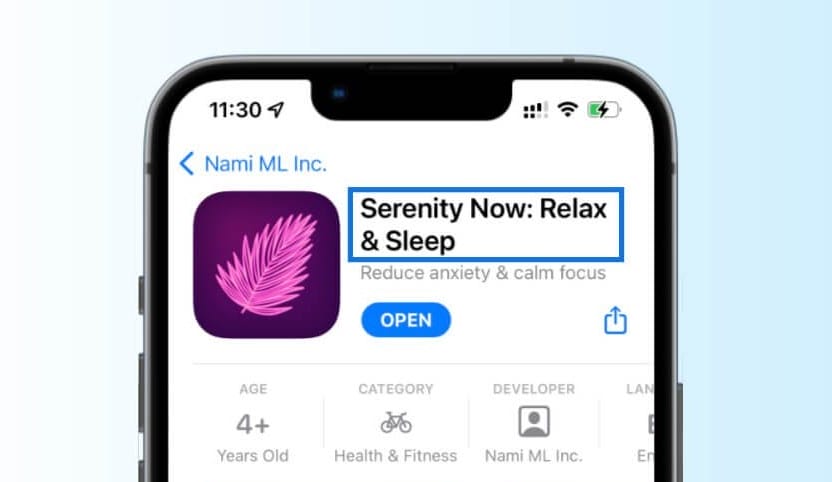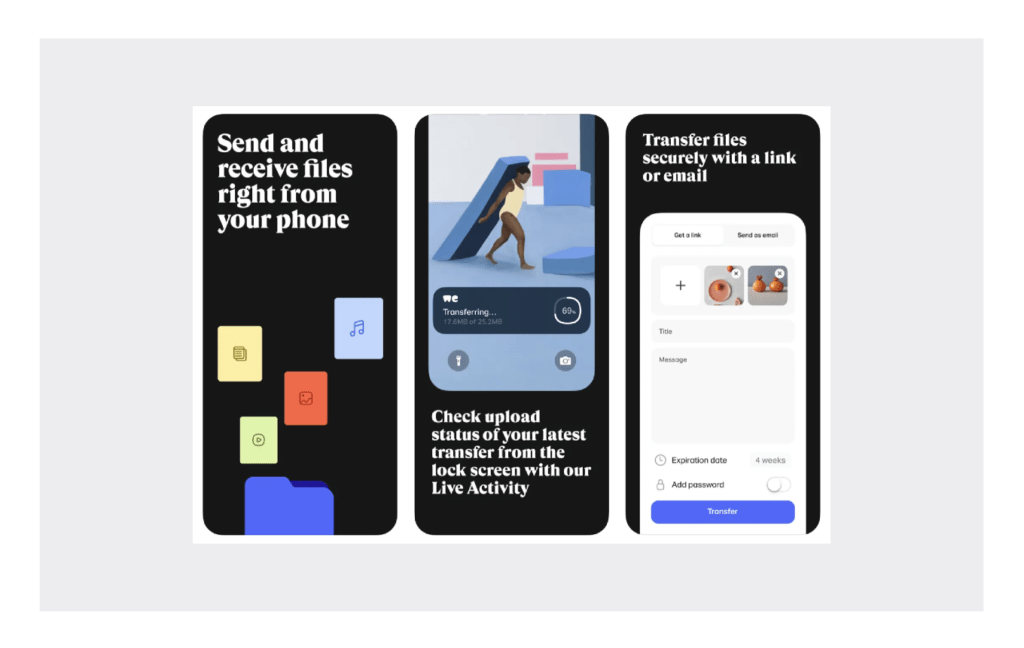App Store Optimization (ASO) is the ongoing process of enhancing the visibility and ranking of an app within an app store, which is crucial for users’ discovery and engagement. ASO, also known as app search optimization or app store SEO, aims not only to increase app downloads but also to generate reviews, foster user engagement, and boost brand recognition.
In this comprehensive guide, we offer all the advice and techniques necessary to excel in app store optimization. Whether you’re new to app stores or seeking to deepen your understanding of ASO, this guide provides you with the insights and strategies needed to elevate your app’s ranking and visibility in app stores.
Table of Contents
Key Elements of App Store Listing
Your app’s ranking should rise with the number of installations. This should therefore lead to additional installs, improved rankings, and so on.
What, therefore, are the essential elements on your mobile app page that influence users’ decision to click the install button?
- App icon: The element that stands out the most visually on results pages and recommendation lists in the majority of app stores is your app icon.
- App details: This comprises the name or title of your app as well as, typically, a brief description that explains the app’s goal.
- App rating: The majority of platforms display your app’s average rating or review score at the top of your app listing page and in search results.
- App description: Users can view a synopsis of your app on Google Play and the App Store by clicking on a link, so the first sentence or two are very important.
- Visuals: Any feature photos, screenshots, and demo videos that you can include in your listing to highlight the main features and user experience of your app are included here.
- User reviews: Users will most likely read through some reviews left by previous users unless they are already familiar with your app.
#1 Keyword Research
Any effective search engine optimization plan starts with keyword research. It entails figuring out which highly effective and relevant keywords prospective users are most likely to use while looking for apps that are comparable to yours. You can improve the metadata for your app to make it more visible and eventually encourage more downloads by learning the language and terms that your target audience uses.

Making a list of possible keywords that are pertinent to your app is the first stage in the keyword research process. Terms pertaining to its characteristics, functionality, target market, and rivals may be included in this. After compiling a list of keywords, the next step is to evaluate the volume of searches and degree of competition.
App Annie, Sensor Tower, App Store Connect, and other tools can offer useful information about keyword competitiveness and popularity. To increase the exposure of your app, look for terms with a large search traffic but little competition. Long-tail keywords should also be taken into account as they are generally less competitive and more precise than broad terms.
#2 Crafting an Effective App Icon
The app icon is one of the most noticeable features when users browse the iOS app store, similar to other app stores. Apple app store has more stringent design guidelines than most other companies when it comes to app icons.

Therefore, you might want to start with Apple first if you’re promoting your app across the App Store and Google Play, and any other platforms. This makes it, for the most part, the simplest to keep a consistent design across all platforms.
In general, the same principles of design hold true. Make effective use of contrast, color, and iconography to keep it straightforward and powerful.
Consider your rivals and strive to create an app that is distinct from the others that your intended user base is probably going to see.
#3 Crafting Compelling App Descriptions
The description sections of your app are essential to your ASO plan. Why? because they give you a more flexible way to explain your app’s features.

Both the long description field (4,000 characters) and the short description field (80 characters) offered by Google Play are used for app store ranking. Only a lengthy (4,000 character) description field is available in Apple’s App Store, and it doesn’t seem like app rank is done using it.
However, this field is still crucial even if an app store doesn’t use your app description field or fields for ranking, since it influences how users view your application. Therefore, the description field will also have an impact on the number of downloads for your app, which will have an impact on your ranking.
Take your time crafting a captivating app description. Give a brief description of its goals, key components, issues it resolves, and any other details users should be aware of. In order to improve the ranking of your app, try incorporating keywords from your keyword research into your descriptions.
#4 Boosting App Ratings and Reviews
In Google Play, app ratings are prominently displayed in search results and at the top of app listing pages. In addition, the largest component on your listing page is the noticeable Ratings and Reviews section. One of the most important trust factors that influence users’ decisions about which apps to install is their rating and review system.

Perfect review ratings are not necessary, but positive ratings (3.5+ stars) are very helpful for rankings and installs. Users can see other people’s reviews of you as well as your responses to them by visiting your review profile. Once more, user problems handled well often carry more weight than scores or feedback alone.
A system must be in place for creating reviews on a regular basis, responding to them, interacting with reviewers, and resolving user concerns. Since your responses are visible to others, steer clear of canned answers and instead demonstrate your problem-solving skills to new and prospective clients.
#5 Optimize App Title and Subtitle
In today’s fiercely competitive app industry, the significance of a compelling title and subtitle cannot be overstated. Crafting attention-grabbing titles and subtitles is just one aspect of optimizing your app; equally important is ensuring its placement for maximum discoverability and relevance. Let’s delve into the science and art of creating a winning combination.

Your app’s title serves as the initial attraction for users, leaving a lasting impression. It should be concise, memorable, and directly relevant to the app’s purpose. Incorporating relevant keywords into the title enhances its visibility in search results, increasing the likelihood of reaching your target audience.
The subtitle complements the app’s value proposition, offering additional context to support the title. This presents an opportunity to provide a brief overview highlighting the unique features of your app. Think of it as an extra hook to engage users who have already shown interest by clicking on your app listing. Here, you can further emphasize the benefits and functionalities of your app, enticing users to explore further.
#6 Create Captivating Visual Assets
The face of your product is your app icon. It’s the small but powerful icon that serves as the App Store representation of your business identity.

Screenshots are yet another essential tool in your ASO toolbox. Users are encouraged to explore deeper by these snapshots, which provide a peek into the user experience. Select top-notch photos that highlight salient characteristics and advantages. Emphasizing distinctive features, such cutting-edge capabilities or eye-catching visuals, will persuade prospective customers to choose you.
By offering engaging glimpses of your app in operation, video previews boost user engagement. Static graphics alone are not as successful at communicating the value proposition of your software as a well-made video. Remain succinct, engaging, and concentrated on outlining the essential features. For a memorable impact, use eye-catching graphics, quick animations, and enticing music.
#7 Monitor and Iterate
The next step, iterating, is using the information gathered from monitoring to improve and maximize the app’s visibility in the store. This iterative process includes a variety of tasks, including as improving user experience and visuals, as well as adjusting app descriptions and keywords. Through constant optimization of components like the app icon, images, and preview videos, developers can clearly convey the value proposition of their app and draw in potential customers who are perusing the store.
Iterating goes beyond making minor adjustments; it also includes making calculated adjustments in response to changing consumer preferences and market trends. In addition to guaranteeing relevancy, frequent app updates with new features, bug repairs, and performance improvements also encourage user happiness and loyalty. In addition to mitigating bad comments, responding to user evaluations and immediately addressing concerns indicates a dedication to quality and customer-centricity.
#8 Utilize A/B Testing

A/B testing in app store optimization (ASO) significantly enhances an app’s performance by identifying the most effective elements to attract and convert users. By comparing different versions of app icons, screenshots, and descriptions, marketers can determine which variations drive more downloads, leading to higher conversion rates.
This process relies on real user data, allowing decisions to be made based on concrete evidence rather than assumptions. Improved user engagement is another benefit, as testing helps discover what resonates best with users, increasing their satisfaction and likelihood of using the app.
Moreover, A/B testing provides a competitive advantage by ensuring the app remains appealing and relevant in a crowded market. Regular optimization through testing keeps the app store presence fresh and engaging.
This approach is also cost-efficient, as it allows for the strategic allocation of marketing resources, avoiding investments in less effective strategies. In essence, A/B testing in ASO leads to better visibility, conversion, and user engagement while providing actionable insights for continuous improvement.
#9 Stay Updated with App Store Guidelines
Adherence to the standards also promotes credibility and trustworthiness among users. Following Apple’s strict standards sends a clear message to users:
Their safety and pleasure are top objectives in an era where data privacy and security are crucial.
Developers may foster trust and loyalty by protecting customer data and offering a flawless user experience. This will enhance favorable reviews, ratings, and user retention.
How then can developers make sure they remain current with App Store policies? First and foremost, it’s critical to consistently keep an eye on Apple’s official announcements and updates. The platform often publishes improvements to its features, policy, and rules, which may have an effect on how well apps function and are submitted. In order to resolve any confusion and obtain assistance when required, developers should also make use of resources like documentation, forums, and developer support channels.
It is essential to cultivate a culture of ongoing learning and adaptability. It is imperative for developers to take the initiative to gather information, remain up to date on industry best practices, and gain knowledge from the experiences of their colleagues. Developers can confidently manage the constantly evolving App Store restrictions and maintain their apps’ competitiveness and success in the market by remaining inquisitive, flexible, and proactive.
Conclusion
In conclusion, effective App Store Optimization (ASO) strategies are crucial for enhancing your app’s visibility and driving higher download rates. By leveraging techniques such as keyword optimization, compelling creatives, and user review management, developers can significantly improve their app’s ranking and attractiveness in the app store. Moreover, incorporating A/B testing into your ASO efforts provides data-driven insights that ensure continuous improvement and adaptation to market trends.
For those looking to maximize their app’s potential without navigating the complexities of ASO alone, partnering with a specialized App Store Marketing company can offer expert guidance and proven strategies tailored to your app’s unique needs. Embracing these optimization strategies not only boosts your app’s performance but also solidifies its presence in an increasingly competitive market.
